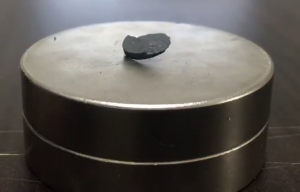ForumIAS announcing GS Foundation Program for UPSC CSE 2025-26 from 27th May. Click Here for more information.
Source-This post is based on the article “Study revives South Korea superconductivity claim with new data” published in “The Hindu” on 4th January 2024.
Why in the News?
Chinese and Japanese scientists have found signs of superconductivity in the controversial material LK-99, which was under scrutiny for similar claims last year.
What is LK-99?

1) LK-99 is a mixture of powdered compounds of lead, oxygen, sulfur, and phosphorus.
2) When heated at very high temperatures, it forms a dark grey solid.
3) Korean researchers have proposed it as a potential room temperature and pressure(RTP) superconductor, claiming its superconducting properties up to 400 K at ambient pressure.
4) Later Independent researchers identified issues in the group’s data and rejected the assertion.
What were the findings reported in the new study?
1) It observed an indication of near-room-temperature superconductivity in LK-99.
2) The researchers observed the Meissner effect in LK-99.
3) Researchers look for hysteresis loop during the experiment.
Note- A hysteresis loop shows how a material’s magnetization responds to changes in an applied magnetic field. The loop shape is due to the material retaining magnetization even after the external magnetic field is reduced to zero.
What is the Meissner effect?
1) The Meissner effect in superconductors is the expulsion of a magnetic field when the material transitions to the superconducting state below the critical temperature, causing repulsion of nearby magnets.
2) The effect is only observable with a direct current (DC) used to generate the magnetic field.
3) If an alternating current is employed, the material won’t exhibit the effect as the magnetic field continuously changes directions.
4) It is utilized in various technological applications, such as in the development of levitating magnetic trains and superconducting magnets.
UPSC Syllabus- Science & Technology




